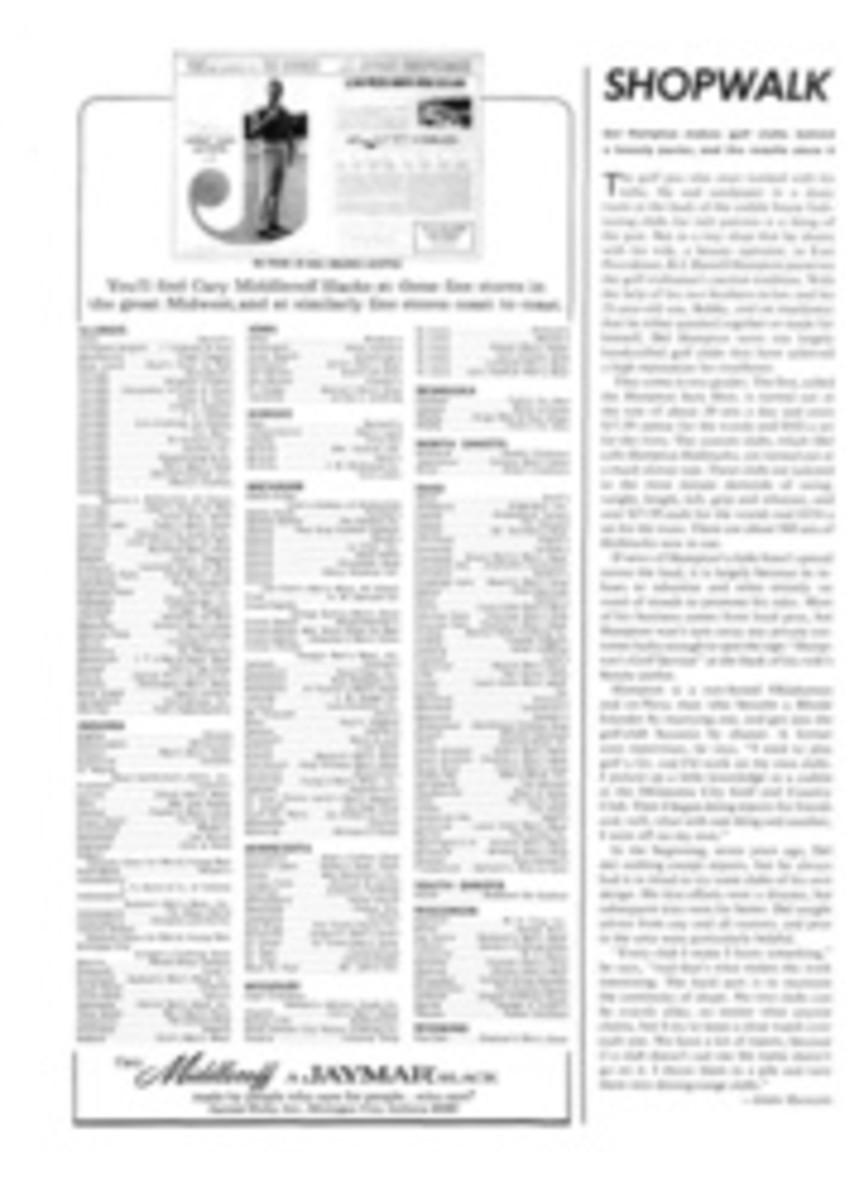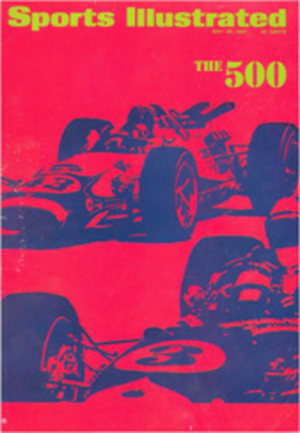
Twice in a Row It Was Three Men at a Clip
When was the last time you saw an unassisted triple play in a major league ball park? When was the last time you saw two of them on successive days? You'll have to be in comfortable middle age to answer either question, for it has been 40 years since Johnny Neun of the Detroit Tigers, a first baseman of all things, pulled off his solo triple killing against the Indians on May 31, 1927. And it has been the same length of time plus one day since Jimmy Cooney of the Chicago Cubs did the same thing against the Pirates. Since those plays more than 2,700,000 runners and batters have been put out in 50,000 big league baseball games but never again three at a clip by one man.
Today Jimmy Cooney is living in easy retirement in Cranston, R.I. He left baseball as a player in 1932, and of that great day in the past he remembers mainly that "Joe McCarthy—he was the Cubs' manager then—came charging out of the dugout and shook my hand. I don't think he said much but I'd never seen him do that before for any player during a game. He came halfway out to my spot at shortstop."
Next morning a headline in Pittsburgh's Gazette-Times told readers only that WIN STREAK ENDS AS BUCS AND CUBS SPLIT. The fans had to read through two banks of type before learning further that a "Triple Play Unassisted by Cooney Is Hair-Raiser."
"Well," says Cooney now, "maybe it was a hair-raiser, but I didn't even get to celebrate. Those were Prohibition days, you know, and if you got near a bottle of beer the club would fine you 10 bucks. That was a lot of money. I had a big dish of ice cream instead."
It took three whole paragraphs before the Gazette's Sportswriter Charles J. (Chili) Doyle got around to talking about Cooney's feat in his story of the day's doubleheader, and he didn't sound overly worked up: "To all intents and purposes the three-way put-out broke the dramatic sequence of victories which had made the Buccaneers the spellbinders of the sport. The Pirates thought they were headed for their 12th consecutive success when Cooney speared Paul Waner's liner."
Doyle wound up his essay with this final tribute to Cooney, "Jim Cooney always will remember his triple play unassisted, and so he ought. How could anyone forget?"
The way Cooney remembers the play is this: "Tony Kaufmann, the old right-handed pitcher, was working for us. With men on first and second it was my job as the shortstop to hold the runner, Lloyd Waner, close on second.
"We got the signal from Catcher Gabby Hartnett, who felt that Paul Waner, with power to right, also could hit to left. Hartnett called for a curve, and Kaufmann broke it to the outside of the plate. Waner really lined it.
"About 99 out of 100 times it would have been a base hit. Lloyd had a big lead and broke fast. I jumped and got the ball in my gloved hand. I took a step, and Waner was out. Clyde Barnhart came sliding into second. He had gone so far he was committed. They probably had the hit-and-run on. I got him easy."
The big play occurred in the fourth inning, and Kaufmann struggled on to win the game 7-6, even though he gave up 14 hits.
Unlike Cooney, Johnny Neun is still in baseball, working as a scout in the Yankee farm system, and his own golden moment in Detroit still seems as vivid to him as if it were yesterday.
"Some of the Detroit players were having breakfast together that morning, and we were reading about Cooney's unassisted triple play," Neun remembers. "I said, maybe just to make conversation, I wonder how long it will be before anybody makes another one."
It wasn't very long, and Johnny was the man who made it. In many respects his was the rarer feat. He was a first baseman, and only two of the seven unassisted triple plays in major league history were made by first sackers.
The late H. G. Salsinger of The Detroit News told the story this way in the afternoon editions of June 1, 1927:
"Johnny Neun is not the only first baseman in history to make an unassisted triple play. But Neun's play against Cleveland on May 31, 1927, carried more dramatic effect than any other ever made in baseball.
"Detroit and Cleveland were engaged in one of the pitching duels of the season. Warren (Rip) Collins was working for Detroit and Garland Buckeye for Cleveland....
"When the ninth opened, the stage was set. It was Buckeye's turn at bat, leading off in the ninth. In his place Glenn Myatt was sent in. He walked on four pitched balls. Charles Jamieson rolled a bunt to the right of the pitcher's box. Collins fumbled the bunt after he got his hands on it, the bunt being recorded as a scratch single for Jamieson.
"With first and second occupied and none out, the Tigers' one-run lead looked insignificant. Homer Summa was sent up to sacrifice the two runners along. He tried twice to bunt the ball and fouled off on each attempt.
"Then he swung and sent a liner directly at Neun. Both Myatt and Jamieson were off with the pitch. Neun, taking the batted ball, had the play mapped out when he got his hands on it: Neun turned quickly and ran over to where Jamieson was starting back toward first. He tagged Jamieson on the line and hurried on. John Tavener, standing on second, was yelling for the ball. Neun ignored him. He rushed madly to second, touched the bag, completed an unassisted triple play and ran to the club house.
"The sudden termination of the game left the audience gasping. Then came loud cheers for Neun and after the game the hero was kept busy for half an hour signing baseballs, scorecards, ledgers and what not."
Three paragraphs from the end of his story, Salsinger finally noted Cooney's achievement of the day before.
"Oddly," Salsinger remarked almost in passing, "the sixth and seventh unassisted triple plays in baseball history were made on successive days."
Today both Cooney and Neun remember wistfully that neither of them netted a dime out of his achievement.
"One thing it meant to me at the time, was that I had to buy a lot of papers," said Neun. "A good many people kept writing to me asking about the play and I would just send copies of the stories. But the papers only cost 2¢ in those days so that wasn't so bad."
"I still get about 20 cards every year from oldtime fans asking me about the play, some of them asking for my autograph," says Cooney. "A lot of them have lost track of me and send them to my brother, Johnny, who also played major league ball a long time and who now lives in Florida."
Neun and Cooney never had a real session together over the years to talk about their big days.
"I'd like to see Jimmy again," says Neun. "I guess the last time we got together was when we were both sent to the International League, around 1929. We were on different teams, and we'd just see each other now and then."
Neun had a brief stretch managing the Yankees in 1946 when both Joe McCarthy and Bill Dickey gave up during a Red Sox runaway to the pennant. He was pilot at Cincinnati during the following two seasons. He worked off and on for many years as a sportswriter for the Baltimore Sun but feels now his best niche in the game is in developing young players, and he's glad to be in that phase of it.
Until recent years Cooney directed semipro teams for a textile plant. Since his retirement he has confined his baseball to looking on with a few Little Leaguers from time to time.
"The game has changed a lot and I don't like it as much anymore," he said. "I guess the last time I really had much to do with baseball was when my old Braves were in the World Series against the Yankees in 1957 and 1958. I went to see the games in New York then, but except for seeing the Yankees after that a few times that's about it."

